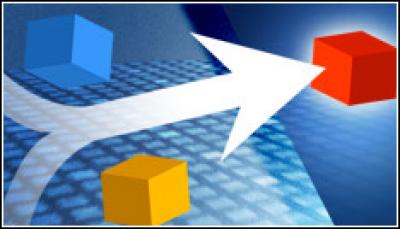Rackable CEO Explains SGI purchase

It’s a tiny deal compared to the proposed IBM-Sun Merger, but Rackable will do well with SGI, says Mark Barrenechea
What’s in it for Rackable?
The benefits for Rackable are less clear, though at $25 million, there aren’t a lot of risk, he said: “It’s a relatively low price for Rackable to pay to get some products, some engineers,” Ryder said. “It may give Rackable some products they can use.”
The deal for SGI follows through with a pledge Barrenechea made in February, when Rackable announced its fourth-quarter earnings, to spend 10 percent of its cash reserves to expand its product offerings and sales. According to Rackable’s earnings report, it had $181 million in cash after the fourth quarter.
Rackable is taking on a company that has struggled mightily in recent years. SGI, which was entering its 26th year this year, made a lot of money selling high-end, expensive and proprietary servers and workstation for tasks that called for 3D, video and animation capabilities. However, the company — which once owned Google’s sprawling Mountain View campus — struggled as the market turned to smaller and cheaper industry-standard systems powered by chips from Advanced Micro Devices and Intel, and SGI could never catch up.
In 2005, the company was delisted from the New York Stock Exchange, and a year later emerged from five months of Chapter 11 bankruptcy protection. Part of the plan was shelving its legacy MIPS/Irix hardware, focusing instead on building systems using Intel chips, as well as building out it visualisation and shared-storage technologies. On March 30, SGI announced that its Altix ICE integrated blade platform would be powered by Intel’s new Xeon 5500 series processors.
However, a few weeks ago, SGI, which has about 1,200 employees, learned that it again would be delisted from the NYSE, and on April 1 filed for bankruptcy a second time. In the Chapter 11 paperwork filed in New York, SGI listed assets of $390 million and debts of $526 million. The company cited its cost structures, decreasing revenue and growing competition as the key issues behind the bankruptcy filing.
Rackable officials declined to talk about specifics regarding the liabilities it will take on by buying SGI. CFO Jim Wheat would only say that Rackable officials had “analysed this and we do have enough cash to continue the operation of a combined business.”
Rackable in the fourth quarter 2008 generated $38.8 million, a significant drop from the $111.3 million in revenue it had in the fourth quarter 2007. Officials said much of that decline was attributable to its two largest customers — which account for 21 percent of Rackable sales — reducing their purchases. Officials said they entered 2009 with $20 million in backlog orders and deferred payments.
In January, Rackable announced it was cutting its workforce by 15 percent. When announcing the deal for SGI, officials also said they were suspending a planned $40 million stock buyback plan.